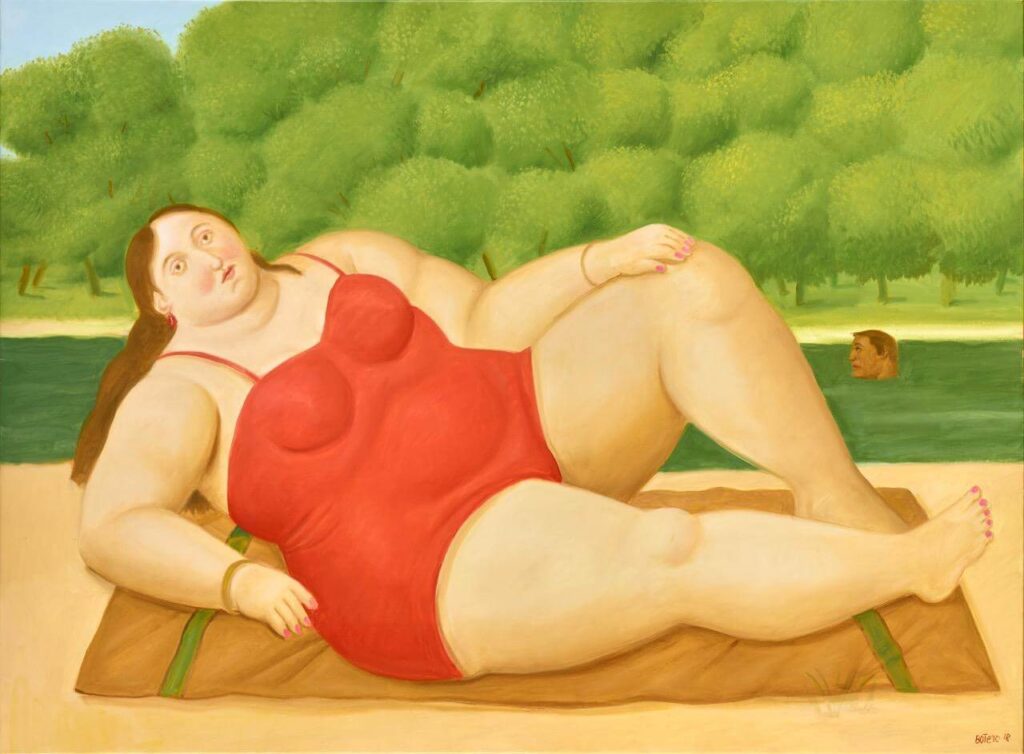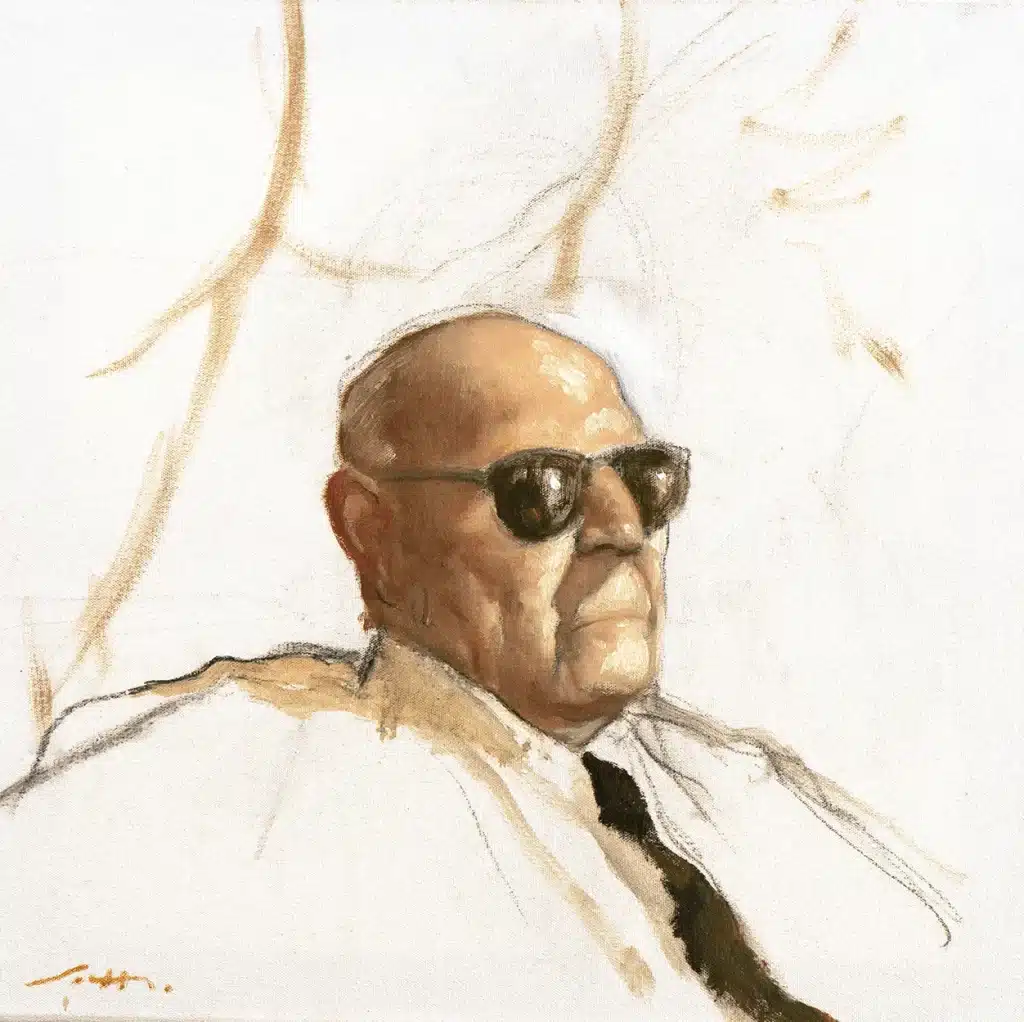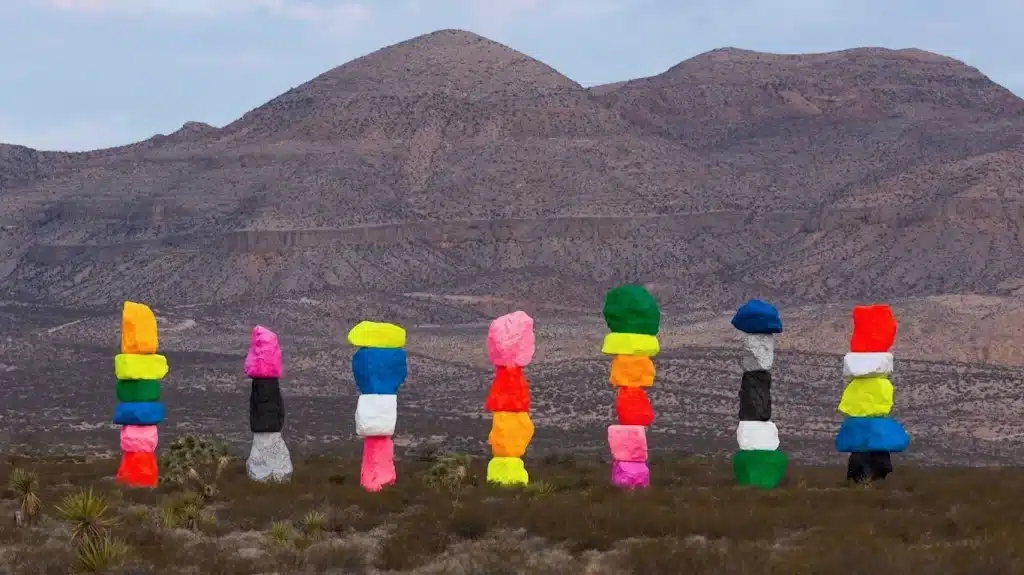Excerpts from the text by Christian Padilla
The young Botero was afraid of the duel to the death between man and beast, which always ends with a thrust or a goring. However, for seventy uninterrupted years he has been fighting the battle that painters have called horror vacui since time immemorial, a confrontation with emptiness that in many cases has driven the most neurotic and deranged artists to insanity. There is something of that addictive delirium in every painter who wakes up every morning to measure his mind with a blank space into which he must pour a new universe. A good connoisseur of Botero will find that compulsive need to fill gaps in those elements that characterize different periods of his work: sometimes a space is completed with some harmless but annoying flies, other times a wide floor must be filled with cigarette butts, in others a blue sky must be transgressed with the smoke of a volcano, or sometimes the huge fruits are accompanied by a small worm. At each epoch a new resource appears that is not only used to fill in those gaps, but also ends up reaffirming the monumentality of the rest of the elements within the painting.

Oil on canvas
85 x 101 cm
In mid-century Medellín, the curia had so much power that it could influence both daily life and the brothel. The industrialization of the city produced a sudden displacement of the lower classes that managed to enter the economy offering services to supply the growing population. However, the appearance of industrial machines gave work to technical operators, while women were marginalized from the labor supply, leaving them adrift. If the proportion of prostitutes in Medellín in 1930 was one for every fifty men, by 1946 it had risen to one for every thirty. La Celestina (1989), Mujer bebiendo (1999), or Botero’s The Whore House (2009) are paintings that bring back memories of that time, when the city lived openly and hypocritically with prostitution, while some groups of good citizens and devotees of their parishes formed the Ligas de Decencia (Leagues of Decency), the Censorship Boards and the Catholic Action that together with the Church were in charge of fighting the sin in which the city fell by trying to prohibit the immoral presentation of Pérez Prado and his lustful mambo in Medellín in 1952, censuring and redesigning the insinuating uniforms of the Municipal Library employees in 1953, or sewing a bra to the public sculpture of the goddess Bachué carved by José Horacio Betancur in 1954 to cover her impudent and exuberant bust. The picture does not look much different now.

Oil on canvas
150 x 177 cm
Botero took the curia to put itself in absurd situations, as a critical and ironic commentary on ecclesiastical power. La Dolorosa (1965) and especially the Levitaciones de Santa Juana de Ávila can be a perfect example of his sense of humor, with this nun holding herself in the air overcoming gravity in spite of her corpulent mass.
But, in addition, the priests have been since his first painting dedicated to religion, an excuse that the colorful religious vestments offer for the experimentation of vibrant shades. If in portraying everyday life there were only dark colors in people’s clothing, religious clothing allowed the painting of cardinal reds, pinks, fuchsias and golds.
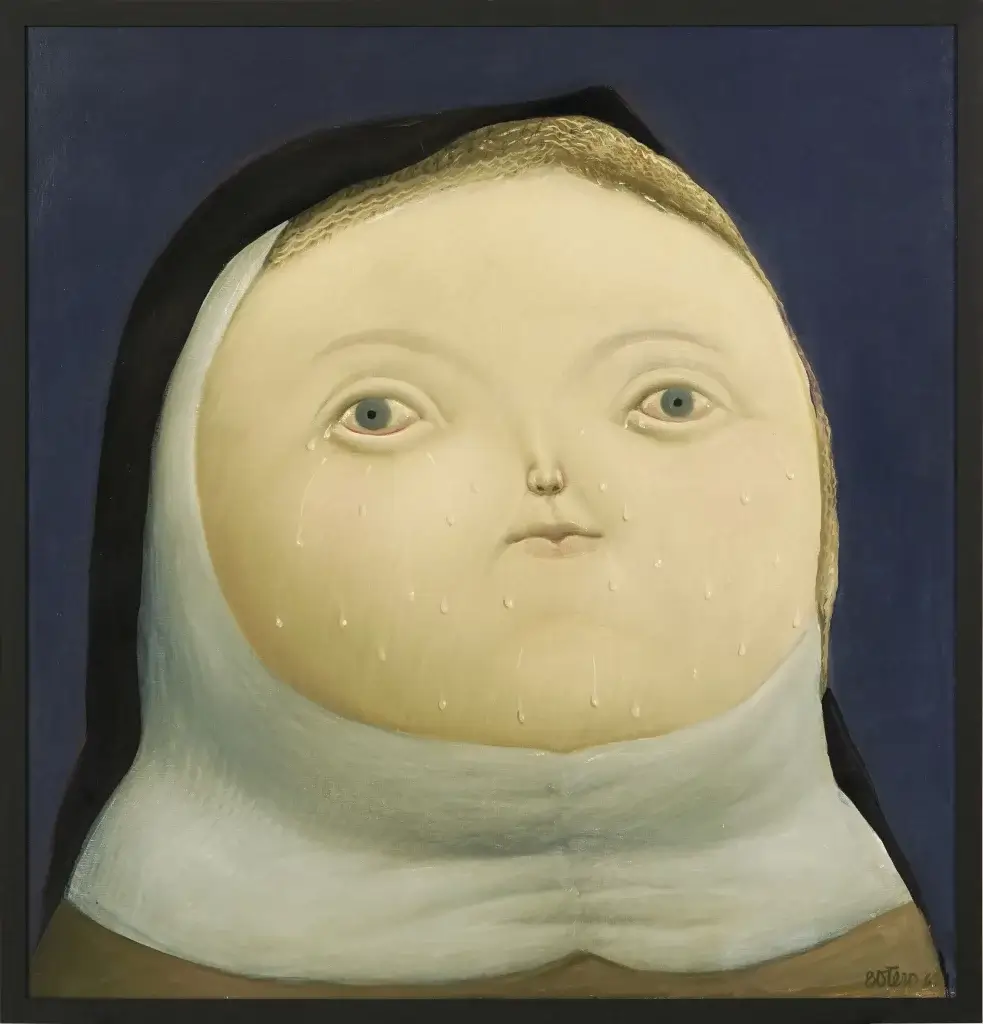
Dolorosa, 1965
Oil on canvas
115 x 110 cm
At the end of 1956, Botero had serendipitously found his style by painting a mandolin with a small hole in the center. The fortunate incident of that small hole in the body of the instrument changed his life because it allowed him to find, more than a formula, the central element of a personal style. The solution was that by changing the internal elements of the objects, the body and the external shape immediately seemed to become monumental. Mandolins and still lifes have since then had a fundamental character in his work by allowing him to discover ways to experiment with form, color and composition. In this sense Botero was again following in the footsteps of Picasso and Paul Cezanne, two revolutionary artists who had changed the history of art by painting still lifes. Without those seemingly innocent still lifes neither would have arrived at the synthesis that transformed what we now know as modern art.
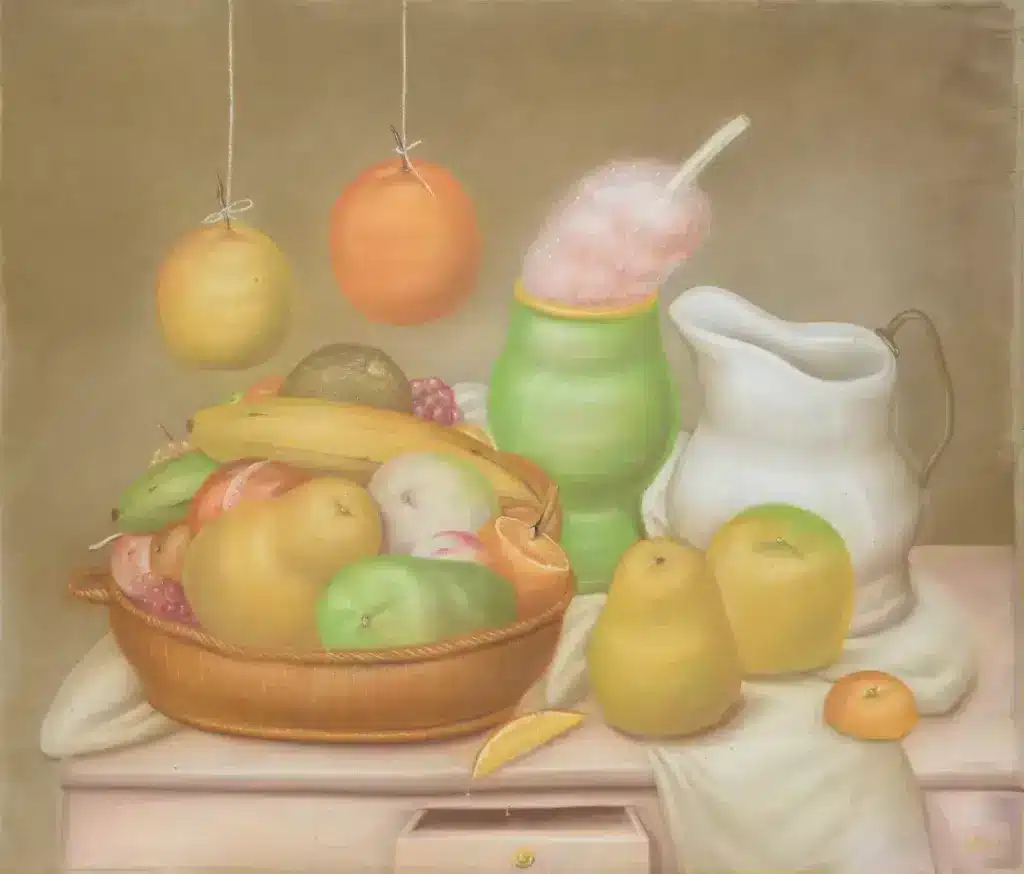
Pastel on paper
80 x 95 cm
For this reason, those who do not know and do not look at his work carefully accuse him of not innovating, of not renewing himself, of always looking like himself, but there is nothing more false than this hackneyed and unfounded argument. On the contrary, there is no artist in a more constant exercise of exploration than he. His earliest stage has traits of Mexican muralism and then violent gestures in the brushstrokes typical of the abstract expressionism he met in New York in the late 1950s. He then looked closely at the transition to Pop Art and even went so far as to declare that his greatest influence was Walt Disney, a provocative and half-mocking statement, but in today’s light exciting because it reveals how he incorporated elements of popular culture before any other artist in Colombia. Even the teacher Beatriz González once declared that when she wanted to start painting, Botero had already invented everything.

